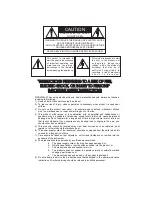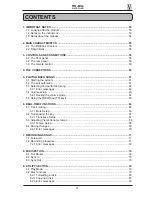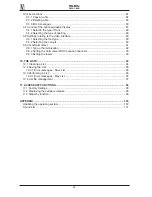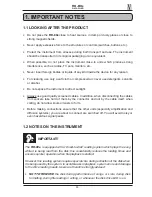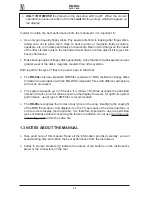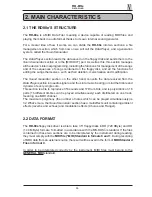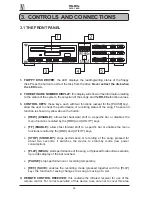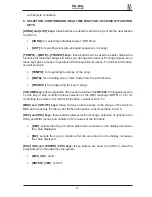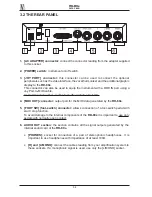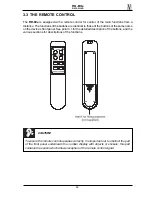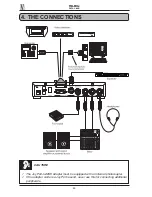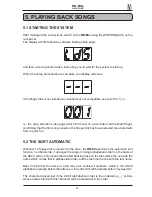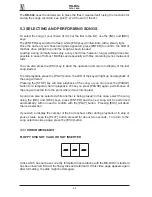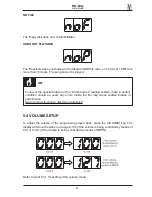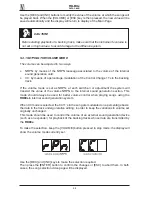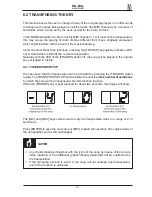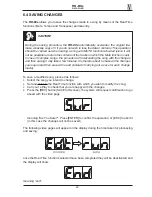
RD-80e
DATA FILER
•
ONLY TO REMOVE the disk when the disk drive LED is off. When the current
operation requires extraction of the disk wait for the prompt, which will appear on
the display.
In order to obtain the best performance from the instrument, it is important to:
•
Use only good quality floppy disks. Pay special attention to looking after floppy disks,
taking care not to place them close to heat sources or magnetic fields (monitors,
speakers, etc.) or in damp and dusty environments. Bear in mind that given the nature
of the direct-to-disk system, the instrument must have error-free disks if it is to give the
best performance.
•
Make backup copies of floppy disks periodically, since the direct-to-disk system causes
greater wear of the disk’s magnetic medium than other systems.
With regard to the type of files to be used, bear in mind that:
•
The RD-80e only uses standard MIDI files (extension *.MID) resident on floppy disks
formatted in accordance with the MS-DOS
standard. Files with different extensions
will not be processed.
•
The system supports up to 16 tracks. If a format 1 MIDI file exceeds the permitted
number of tracks, an error will be shown on the display. However, for optimum system
performance, use of type 0 SMF files is recommended.
•
The RD-80e recognises the format of any lyrics on the song, identifying the copyright
of the MIDI file producer, and displays it on the TV, by means of the video interface, or
on the remote display (both optional). It is therefore important to use the permitted
types of Karaoke without converting the format. In addition, do not use more than one
text coding mode within the same file.
1.3 NOTES ABOUT THE MANUAL
•
Take good care of this manual. Read all the information provided carefully; you will
avoid wasting time and obtain the best performance from the instrument.
•
Codes in square brackets ([]) indicate the names of the buttons on the instrument’s
panel or the connectors on the rear.
54


